As part of Planning’s background research, we tabulated the most common affordable housing strategies included in the comprehensive plans of Maryland’s jurisdictions. The five most common practices are:
To build upon this research, Planning presented these five common strategies to the stakeholder group and solicited their feedback on things that local planners should know about how they work in the real world, outside of the confines of a planning document. For each strategy below, we define it and provide the feedback we received form the stakeholder group. Planning will continue to add to this list in future phases and encourages additional local insight on these strategies and others. If you would like to contribute ideas or lessons learned, please contact Joe Griffiths at joseph.griffiths@maryland.gov.
Inclusionary Zoning
Inclusionary zoning refers to zoning ordinance requirements that new residential development must include a percentage of its units to be built to accommodate affordably priced dwelling units, either for rental or home ownership. The control period, or time in which the units must remain available to households below a certain income level, typically varies from 10-20 years to 20-99 years depending on ownership vs. rental unit type. Inclusionary zoning is dependent on the rate of growth within the jurisdiction and is better suited to more rapidly growing jurisdictions. For jurisdictions that are undergoing transformation, either as greenfield development or redevelopment of existing urban areas, the inclusionary zoning practice will integrate new affordable housing into market rate development.

Even in a growing area, this practice takes time to add significant volumes of affordable housing, as the percentage of affordable to market rate housing must be balanced with each project so that it can support the affordable units. Generally, only 10-20%of the units should be designated as affordable, and to be most effective, those units should demonstrate a density increment allowance above the base density, thus encouraging the developer to invest in them. Some jurisdictions apply the inclusionary zoning provisions only once a certain number of units are being proposed. For instance, Montgomery County only applies the inclusionary housing requirement when the total number of dwelling units proposed is over 50 units. Clauses for opting out of the construction of affordable units often require a fee-in-lieu that is placed into the funding of other public projects for the same cause. Again, the balance of the cost of providing affordable units must be such that the result is that developers do not shy away from these mixed-income projects. Multifamily condominium projects have proven less successful because the condominium fees can escalate to a cost unaffordable for the household in the long term. Therefore, multifamily rental might be a better success rate in the long term. Inclusionary zoning ordinances can be staff intensive, which jurisdictions should consider when deciding whether to implement them.

Back to Top
Financial and Other Incentives
Incentives for affordable housing development or preservation span a broad range of strategies targeting new affordable housing development, rehab and revitalization, and homeownership, just to name a few. Incentives for new development may include LIHTC (for which a developer applies), housing trust funds paid for with local dedicated revenue sources such as real estate transfer fees. For affordable housing rehab, jurisdictions may want to consider the development of local revitalization areas for targeted funding or property tax relief, the acquisition and preparation of properties by the local government for eventual affordable housing development, or DHCD Neighborhood Revitalization grants, which can assist with site development, housing rehab, facade improvements, acquisition, demolition/deconstruction, engineering and architectural designs, energy efficiency improvements, public space and public infrastructure enhancements, and even operating expenses in some cases. To learn more, please visit the Affordable Housing Resources page.

Strategies to encourage and assist homeownership include down payment and closing costs assistance, rehab assistance for income qualified homeowners, or tax abatements. A myriad of potential strategies exist for jurisdictions to consider. Planning encourages Maryland communities to learn more about such strategies at Local Housing Solutions, an excellent source for detailed explanations and examples of how these practices work. Please see the Affordable Housing Resources section of this M&G for more resources and examples of financial incentives.
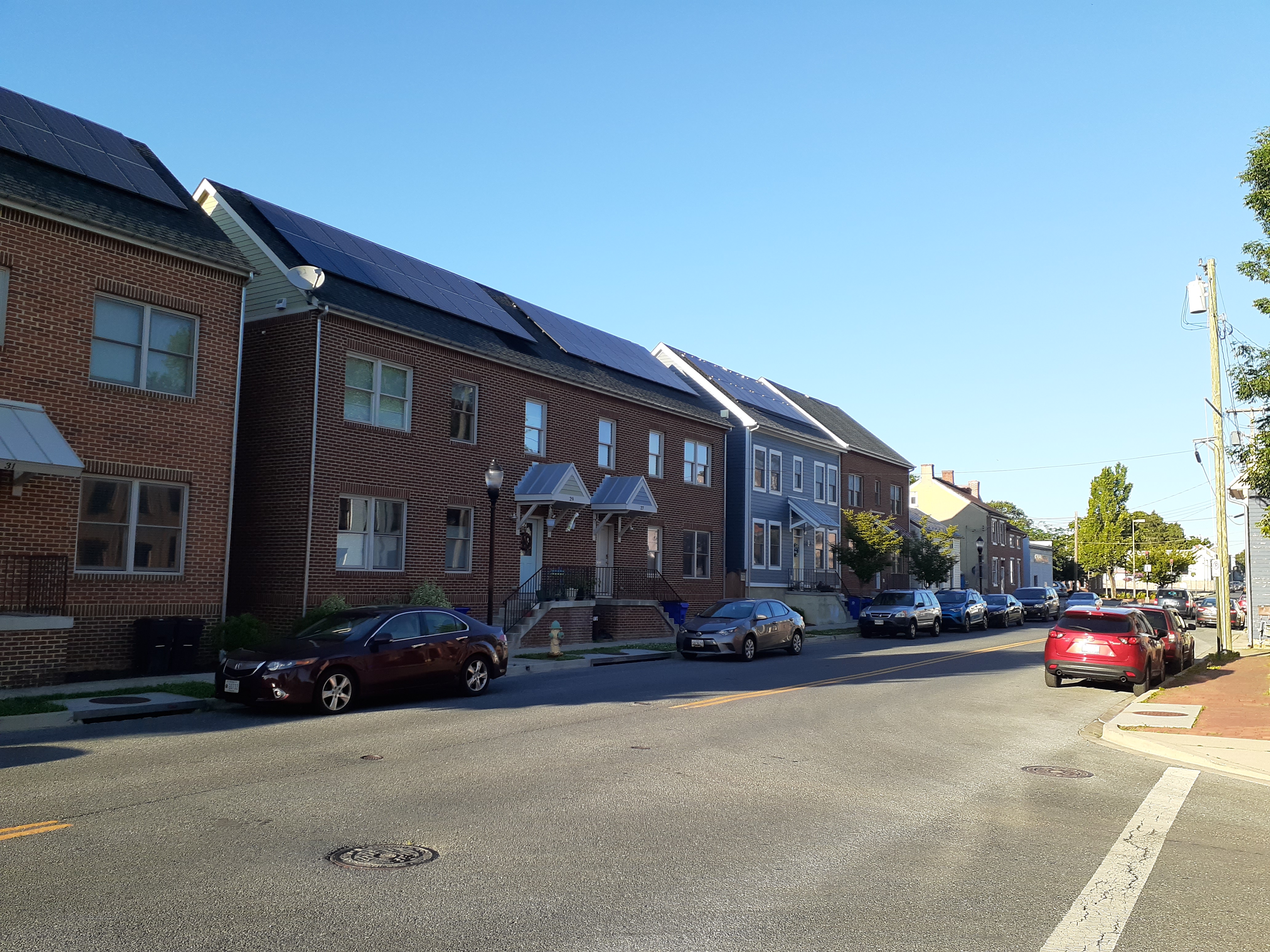
Hope VI mixed income housing project in North Frederick. Many units are zero emission, including solar panels. The units in the foreground are new, while those in the background are rehab, demonstrating successful infill housing development
Prior to implementation, a jurisdiction should fully research and vet if an incentive will be effective. This includes discussions with local stakeholders, consideration of the proper area to apply them, and an analysis of how they will impact and be impacted by the market. Once developed, a jurisdiction should aggressively market their incentive programs to the general community and target audiences. The application of incentives, both in terms of where they can be used and the decision-making process for their approval, must also be clear and transparent, not hidden until later in the development process. Incentives leveraging each other can be especially effective. LIHTC combined with a streamlined review process for affordable housing can make an improbable development a reality.

Back to Top
Partnerships with Developers and Nonprofits
Maryland’s municipalities and counties are far from alone in their pursuit of housing for their low income and workforce residents. National, state, and local companies and organizations are similarly dedicated to this cause. Jurisdictions should engage these groups early and often and lean on their expertise throughout the planning and implementation process. Many of them have been advocating for and developing affordable housing for decades and are looking for partners themselves. They also have extensive networks of partners focusing in the areas of workforce development, human services, public health, and energy efficiency that can bring additional resources to the effort and help a jurisdiction market its housing programs and seek federal, state, regional, and private grant funding and loans. Such organizations are also better equipped to manage the resident side of housing planning, ensuring planning for housing does not neglect those who will call the units home.


Liberty Mews, Oakland
Partnerships often generate a lot of enthusiasm when they begin, but all sides need to understand that they are also complicated, often messy, and always time consuming. Clear roles should be established early on, as well as regular avenues for communication and accountable collaboration. Memorandums of understanding can help delineate the responsibilities of the local government and those of a community development corporation, while measurable objectives and regular reporting will inform progress. And when something is not working, procedures for adjustment will alleviate stagnation and lessen the likelihood of a program sitting on a website, never accessed. Transparency is as vital for partnerships as it is for incentives. For example, jurisdictions acquiring and preparing land or underutilized properties for affordable housing development need to have clear disposition practices that their partners can access and understand. Be creative with your partners, consider regional planning organizations, hospitals, universities, and other anchor institutions, major employers, but also smaller groups like neighborhood and main street associations.

Back to Top
Accessory Dwelling Units
Accessory dwelling unit (ADU) is a term that generally includes the allowance for one additional dwelling unit on a single lot with a primary residence. The ADU could be a separate structure from the main residence, attached to the main residence or integrated into the primary residence. An ADU is typically required to have less square footage than the main residence, often as much as only 50% of the main dwelling on the lot. The ADU is nearly always a rental unit, but it may be occupied by the owner of the lot and then the main residence is rented.
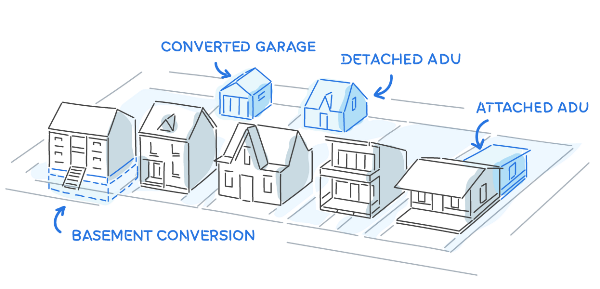
Image Credit: www.hausable.com
This practice is most successful in providing affordable housing when the accessory unit is located within walkable urban areas where amenities and transit are available. However, it is a slow process for implementing affordable housing because it is often controlled by a single property owner and only adds one unit with each project. The ADU utilizes existing infrastructure and an analysis by the jurisdiction is warranted to understand the impact on their existing utility system, including both water and sewer as well as stormwater management systems. The jurisdiction should also be aware of the possible impacts to on-street parking and public facilities such as schools. Both ADU’s and inclusionary zoning present an incremental approach to affordable housing development and can contribute to “quiet density,” which could potentially face less local opposition, but they also require a jurisdiction to monitor and enforce accessory units in owner occupied properties so that they meet local livability standards.
Back to Top
Increased Density in Targeted and Appropriate Areas
Long range planning and visioning generally proposes high density zoning in areas of a community associated with transit, commercial development, and/or areas in need of revitalization. By offering density increments associated with the development of affordable housing in targeted areas, the jurisdiction can control a high influx of affordable housing at the same time, ensuring that the low-income or workforce household has easy access to urban amenities such as shopping, transit and jobs. In doing so, the jurisdiction should insist on design integration into the context of the surrounding neighborhood, if appropriate, and that sufficient amenities are incorporated into the project providing for recreational opportunities on site.
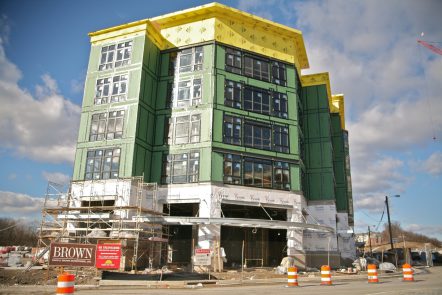 Owings Mills Metro Apartments |
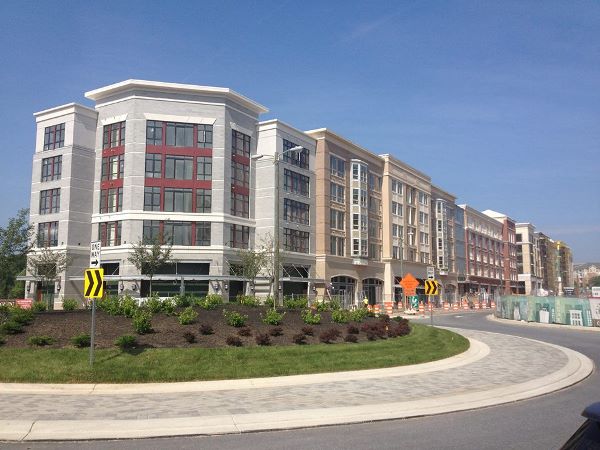
|
Proposing residential density increases, even in targeted areas, often generates substantial local opposition. It is one thing to include it as a housing strategy in a comprehensive plan; it is quite another issue in a comprehensive zoning rewrite as part of that plan’s implementation, and Planning acknowledges this difficulty. Communities should begin this conversation as early as possible in comprehensive plan development, as part of the housing visioning process. Not everyone will be convinced, but an honest and open dialogue can recruit allies. Those who come to understand that density is but one tool in a housing strategy; one that if conducted with careful analysis, can strengthen neighborhoods and local economies, and ensure sustainable, equitable growth. Compatible, appealing, and environmentally sensitive design, along with effective property management and supportive infrastructure, may convert density detractors into density defenders.

Back to Top
Planning will supplement this list of common practices as the M&G evolves in later phases of development. Below are three additional practices we recommend jurisdictions consider when planning for affordable housing in their community.
Missing Middle Housing
Missing middle housing is a newly coined term referring to multi-family dwelling units within a structure, generally between two to four, that fit into the form and context of an established single-family neighborhood. The idea is that this type of housing can benefit populations such as singles, couples, and the elderly. The missing middle housing type is one that may provide more affordable choices within an existing neighborhood. The affordability element comes to fruition using existing infrastructure, such as streets, sidewalks and utilities. The amenities of existing communities where walkability is part of the lifestyle, and public transport is available at no cost.

Missing Middle Housing-Source, Missing Middle Housing.com
Missing middle housing is related to the appearance and design of the structure. The structure could be an existing single-family home that is converted, or a teardown of an existing home that is replaced with a newly built structure with more dwelling units. The structure can contain units such as side-by-side duplexes, or those in which the units are stacked one above the other. A triplex could be side-by- side, stacked, or position one unit under two townhouse-like units above. The structure with four dwelling units could be a quad or side-by-side. Structures with more than four units may contain up to as many as 9-12 units. However, the primary factor is that the structure should be compatible with the existing homes in the neighborhood regarding form and scale, thus potentially limiting local opposition to increased residential density. Local zoning codes can be amended to allow a new range of housing types such as those described here, and if so desired, limit the frequency, locational criteria, and minimum lot size of such units.
Preserving the Existing Affordable Housing Stock
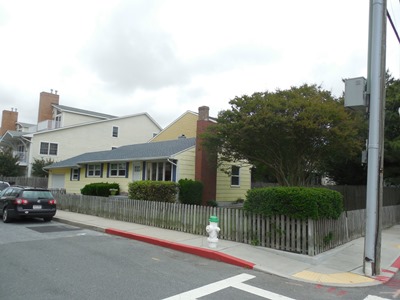 Ocean City Home Before |
and After Rehab |
The preservation of existing affordable housing will help a jurisdiction ensure continued maintenance of residential units, by either the homeowner or the landlord. Naturally occurring affordable housing is often found in older single-family detached neighborhoods where residential homeowners may have restricted income that prevents them from maintaining their homes as they once were able to. Older multifamily housing built in the style of garden apartments are often affordable for low-income families and the elderly. The appearance of neglect in either of these communities may foster a sense of disregard or lead to an increase in crime or the perception of such an increase. Strategies to combat the loss of these types of existing affordable housing types will protect and enhance housing values.
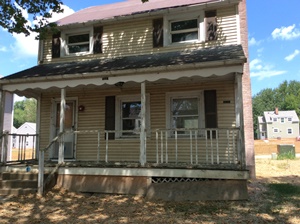 Perry Point Veterans Village, Cecil County Before |
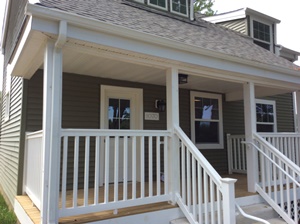 and After Rehab |
A jurisdiction can use several tools to preserve the affordable housing stock within their community. Code enforcement measures should be in place to ensure that landlords maintain, modernize, and replace dead or dying landscaping on the property, and to ensure a decent and attractive community. Façade improvement programs can financially assist and encourage homeowners and landlords to improve the exterior appearance of their buildings. Homeownership education programs can promote reinvestment in neighborhoods that are affordable to younger families pursuing their first home. Property maintenance assistance to homeowners, particularly the elderly, can include energy efficiency measures to reduce the cost of heating and cooling of homes which is often a significant contributor to housing burden. In smaller communities not facing growth pressures, housing preservation is likely the most important strategy for ensuring safe and decent housing for its low income and workforce residents. For such jurisdictions, Planning recommends they focus their housing element in this area and consider other opportunities such as infill development, housing that facilitates aging in place, redevelopment, and rental housing inspection and licensing.

Maintaining existing affordable housing extends beyond physical preservation to include the preservation of affordability itself. This may be achieved through local community land use trusts, which maintain communal or non-profit ownership of land, thus reducing the overall cost of a residential unit. Deed covenants can also ensure that residential property intended for affordable housing is transferred to households below a defined income limit.
Planning for Persons Experiencing Homelessness
The COVID-19 pandemic has brought the struggles of persons experiencing homelessness to the forefront of the national dialogue about housing. How can one shelter in place when they have no shelter? Affordable housing strategies can assist those experiencing either chronic or situational homelessness find a place to call home. HUD defines individuals experiencing chronic homelessness as those who “have been living in a place not meant for human habitation, in an emergency shelter, or in a safe haven for the last 12 months continuously or on at least four occasions in the last three years *where those occasions cumulatively total at least 12 months.”1 HUD describes individuals experiencing situational homelessness as those who “become homeless after experiencing a crisis. These individuals or families typically do not have a support network on which to rely and, therefore, have difficulty maintaining housing through the crisis.”2
In 2018, DHCD published a Homelessness Solutions Program (HSP) Policy Guide for Continuums of Care (COCs) to use when pursuing funding. Jurisdictions interested in learning more about the services provided by the COCs in their area should reach out to the local offices found on this interactive map. And to learn more about homelessness in Maryland, please reference the Maryland Interagency Council on Homelessness’s 2018 Annual Report on Homelessness.
1 hudexchange.info/faqs/2750/what-are-the-main-differences-between-the-previous-definition-of/
2 hudexchange.info/resources/housingsearchtool/?housingsearchtoolaction=public:main.making-the-case-why-provide-housing-search-services